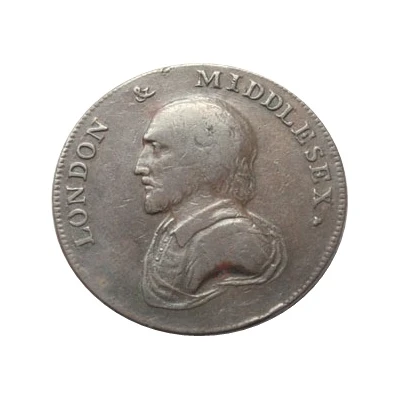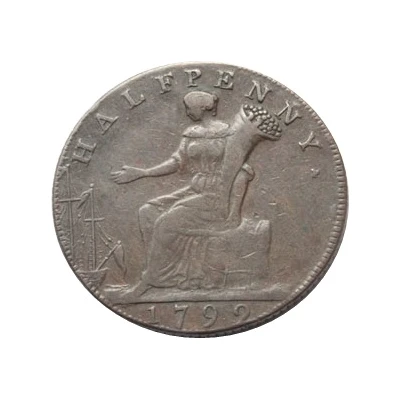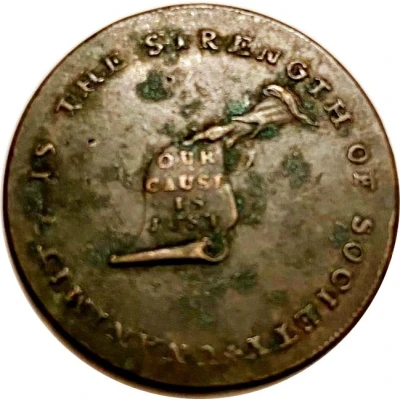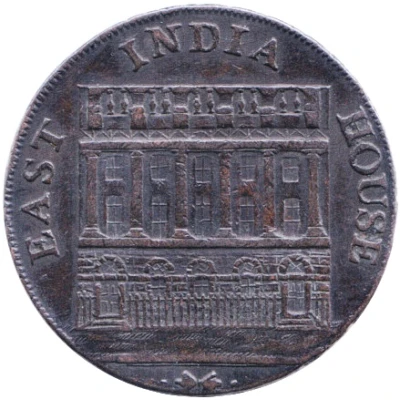
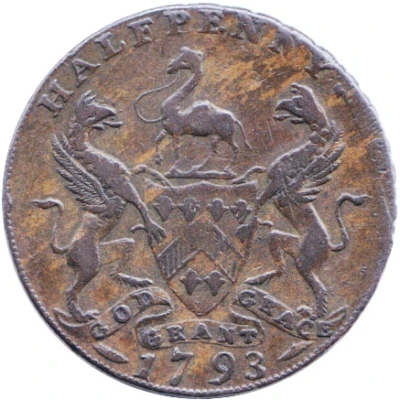

© Timbrimi
½ Penny Yorkshire - Huddersfield / East India House
| Copper | 8.53 g | 27.4 mm |
| Issuer | United Kingdom (United Kingdom, British Overseas Territories and Crown Dependencies) |
|---|---|
| King | George III (1760-1820) |
| Type | Token |
| Years | 1792-1793 |
| Value | ½ Penny (1⁄480) |
| Currency | Conder tokens (1787-1797) |
| Composition | Copper |
| Weight | 8.53 g |
| Diameter | 27.4 mm |
| Thickness | 1.7 mm |
| Shape | Round |
| Technique | Milled |
| Orientation | Coin alignment ↑↓ |
| Demonetized | Yes |
| Updated | 2024-10-09 |
| Numista | N#240713 |
|---|---|
| Rarity index | 87% |
Reverse
Coat of arms of the Worshipful Company of Grocers: а shield with six carnation buds, two griffins on the sides, and a camel with two bales of carnations at the top.
Script: Latin
Lettering:
HALFPENNY
GOD GRANT GRACE
1793
Engraver: Arnold
Edge
Incuse lettering
Note: varieties exist
Lettering: PAYABLE AT IOHN DOWNINGS HUDDERSFIELD
Comment
Coin stamp engraver Arnold of Birmingham, minting master William Lutwyche. Customer John Downing of Huddersfield, Yorkshire.Charles Pye's catalog "A Correct and Complete Representation of all the Provincial Copper Coins, Tokens of Trade, and Cards of Address, on Copper, Which were circulated as such between the Years 1787 and 1801, when they were entirely superseded; a new copper coinage being at that time in circulation, issued by authority of government", printed in 1801, contains information about the die engravers and minting master. The weight of the produced tokens is also indicated there - 1 ton. Taking the average weight of one token for 8.53 grams, we can calculate the approximate circulation of 119,000 pieces.
Also, copies of these tokens were minted in Manchester in 1792 - DH#127 (p. 83).
Interesting fact
One interesting fact about the Token ½ Penny (Yorkshire - Huddersfield / East India House) 1792-1793 from United Kingdom is that it was issued during a time of severe coinage shortages in the late 18th century. The coin was minted by a private company, the East India House, to address the lack of small change in circulation. This coin's unique design, featuring a crowned shield with the initials "E.I.H." (East India House) on the reverse, sets it apart from other coins issued by the British Royal Mint during this period.
